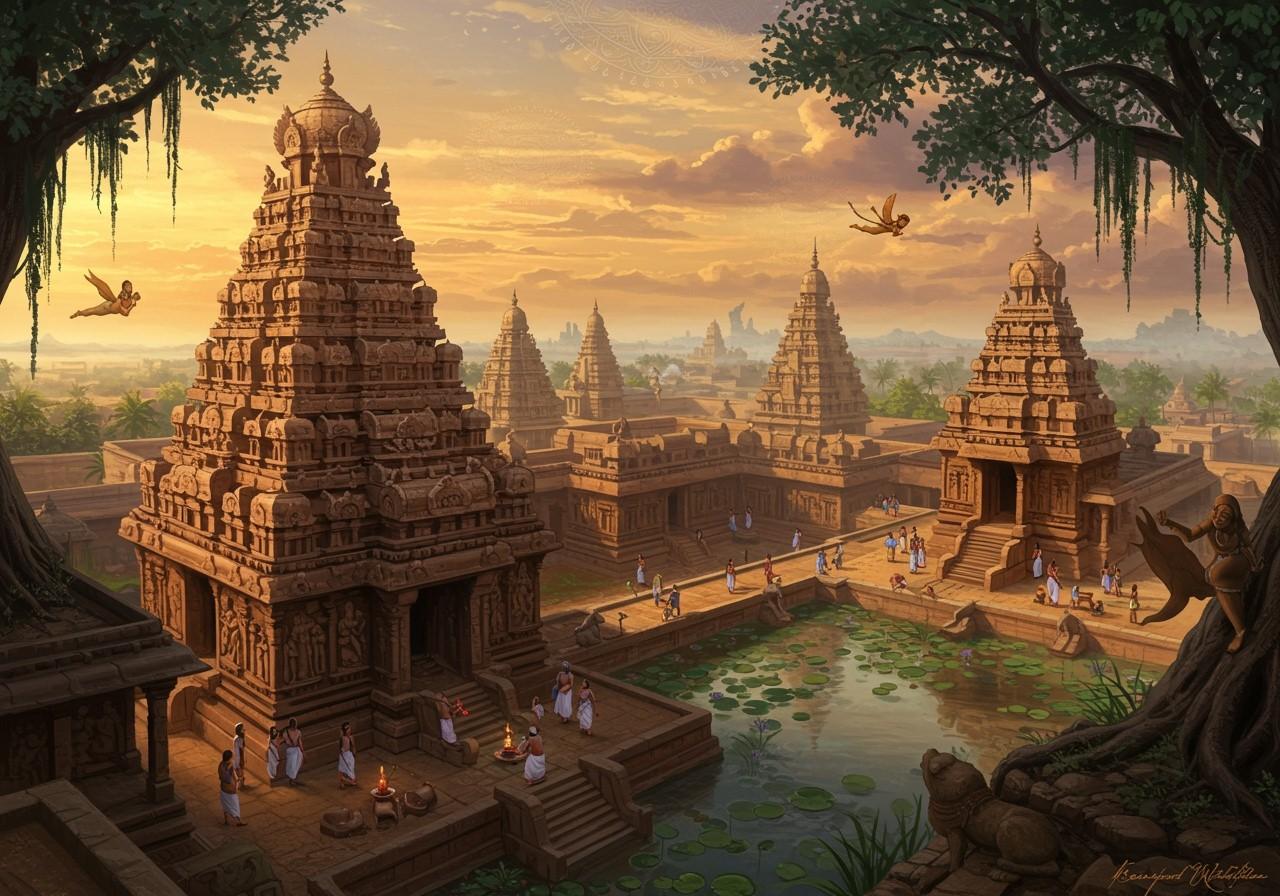
Kanchipuram, a city steeped in history, witnessed a golden age under the Pallava dynasty, which reigned from the 6th to the 9th centuries AD. This period saw Kanchipuram flourish as a hub of religious and cultural significance, offering valuable insights into the socio-cultural dynamics of ancient India. By exploring this rich tapestry, we gain a deeper appreciation for the city’s pivotal role in shaping Hindu traditions.
The Rise of the Pallavas
The Pallava dynasty, originating in South India, ascended to prominence through political and economic prowess. Key rulers like Mahendravarman I and Narasimhavarman II, who constructed the magnificent Kailasanathar temple around 700 CE, were instrumental in establishing Kanchipuram as a prominent religious center. External influences, such as trade and occasional invasions, further contributed to the diverse religious landscape of the city.
Architectural Marvels: Pallava Temples
The Pallava temples of Kanchipuram stand as testaments to the dynasty’s architectural brilliance. These structures, primarily built in the Dravidian style, showcase unique elements like towering vimanas, spacious mandapas, and intricate carvings. Notable examples include the Kailasanathar Temple, dedicated to Lord Shiva, and the Vaikuntha Perumal Temple, a Vishnu temple constructed by Nandivarma Pallava Malla in the latter half of the 8th century CE. These temples served not only as places of worship but also as vital centers for community gatherings and potent symbols of political authority. They beautifully reflect the exceptional artistic skills of Pallava sculptors.
Learn more about the religious importance and history of temples.
Religious Practices in Pallava Kanchipuram
During the Pallava reign, Kanchipuram’s religious practices were remarkably diverse. Vedic rituals, the worship of local deities, and folk traditions seamlessly intertwined with mainstream Hindu worship. Temples became the heart of religious festivals, pilgrimages, and daily worship, with priests playing a central role in these sacred activities. The patronage of Pallava rulers, such as Nandivarma Pallava Malla’s devotion to Vishnu, significantly influenced the religious landscape.
The Divine Influence on Art
Hinduism exerted a profound influence on Pallava art and sculpture. Temple carvings and statues vividly depict Hindu deities, mythological narratives, and traditional iconography, often incorporating symbolic motifs like lotus flowers and mythical creatures. This harmonious fusion of religious and artistic elements in Pallava sculptures significantly enriched the development of South Indian temple architecture.
Explore the legacy of temple architecture.
Religion’s Impact on Society and Culture
Religion played a pivotal role in shaping the social and cultural fabric of Kanchipuram during the Pallava era. Religious institutions were deeply involved in education, literature, and the arts. Temples served as crucial spaces for fostering community cohesion and reinforcing social identity. The interaction between Shaivism and Vaishnavism communities, exemplified by the presence of both Shiva and Vishnu temples like the Ekambareswarar Temple and the Vaikuntha Perumal Temple, demonstrates their peaceful coexistence. The legacy of Pallava religious practices continues to resonate in modern Kanchipuram.
Explore other significant temples in India.
Poojn.in: Connecting You to Kanchipuram’s Sacred Heritage
Poojn.in offers a wide selection of puja items that help you connect with the rich Pallava heritage of Kanchipuram. Whether you are planning a temple visit or performing worship at home, we have everything you need:
- Pure copper and brass lamps: Crafted similarly to those used in Pallava temples, these lamps add an authentic touch to your puja.
- Traditional silk vastrams: Offer beautiful silk vastrams to the deities, just as it was done during the Pallava period.
- Authentic kumkum and chandanam: Sourced directly from South India, these sacred powders enhance the traditional aspect of your worship.
- Camphor and dhoop: Create a temple-like atmosphere during aarti with our high-quality camphor and dhoop.
- Special puja thalis: Designed specifically for South Indian temple worship, these thalis make your puja preparations easier.
Find authentic puja items at poojn.in.
Shop for high-quality camphor at poojn.in.
Our products help you maintain the sacred traditions of Kanchipuram temples while offering the convenience of modern shopping. Each item is carefully chosen to meet traditional specifications and temple standards. We deliver these items right to your doorstep, making it easier for you to uphold authentic worship practices. For temple visits in Kanchipuram, our travel puja kits include all the essentials in convenient travel-friendly packaging, allowing you to fully participate in temple rituals without the hassle of gathering individual items.
Conclusion
Kanchipuram’s historical significance during the Pallava period is undeniable, particularly in its vibrant religious landscape. The city’s rich heritage is beautifully reflected in its magnificent temples, diverse local practices, exquisite art, and complex social dynamics. The Pallava rulers’ unwavering dedication to religion and culture left an enduring impact that continues to shape Kanchipuram today. By understanding this transformative era, we gain a deeper appreciation for the city’s invaluable contributions to Hindu traditions and the broader narrative of South Indian history. Kanchipuram stands as a powerful testament to the harmonious blend of devotion, artistry, and community that defined the Pallava period.


